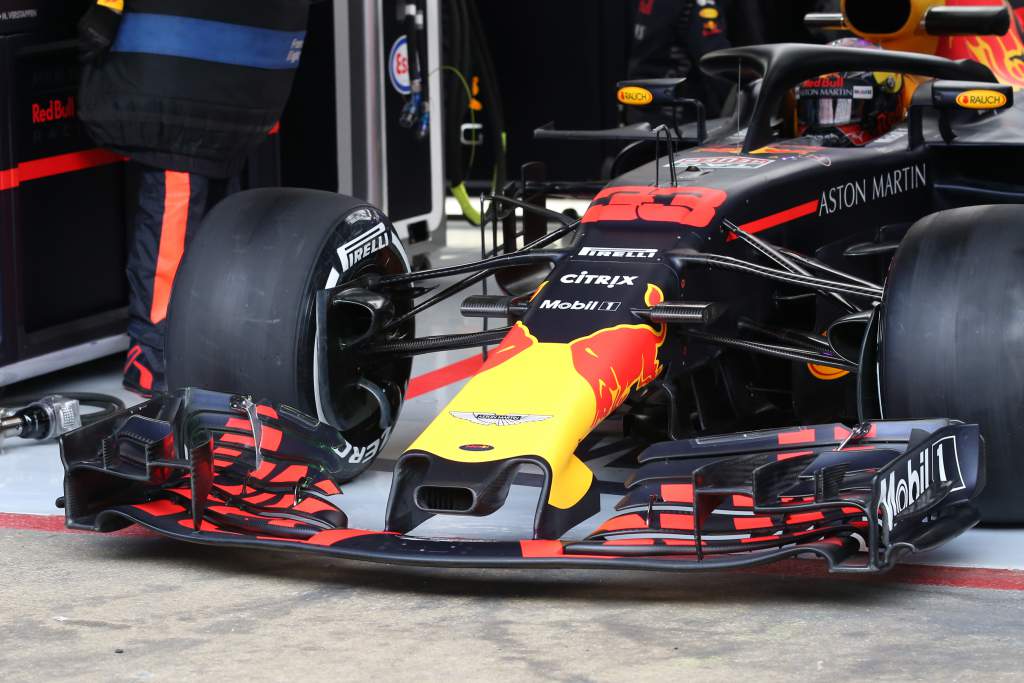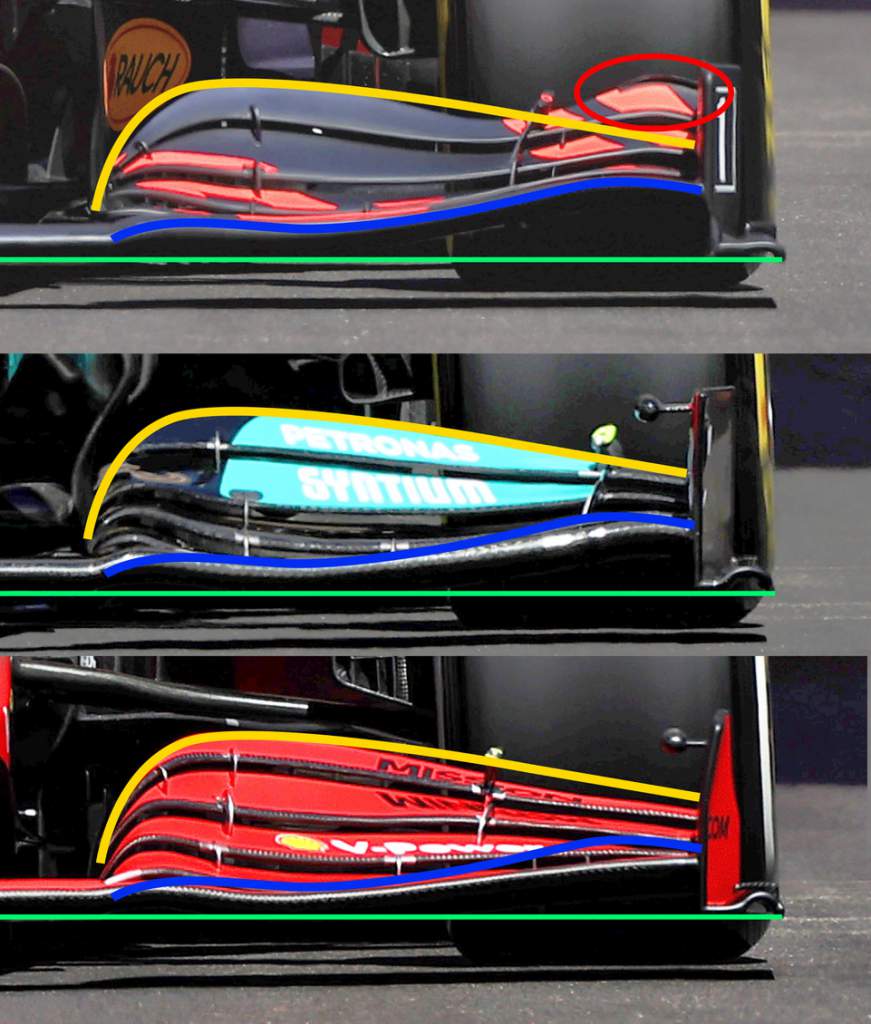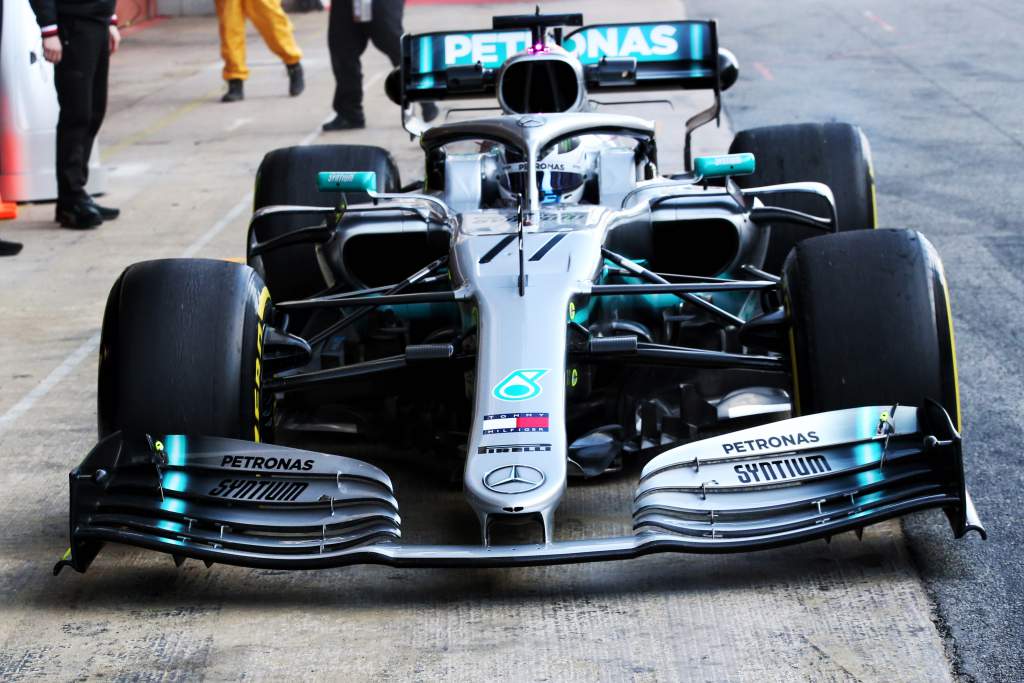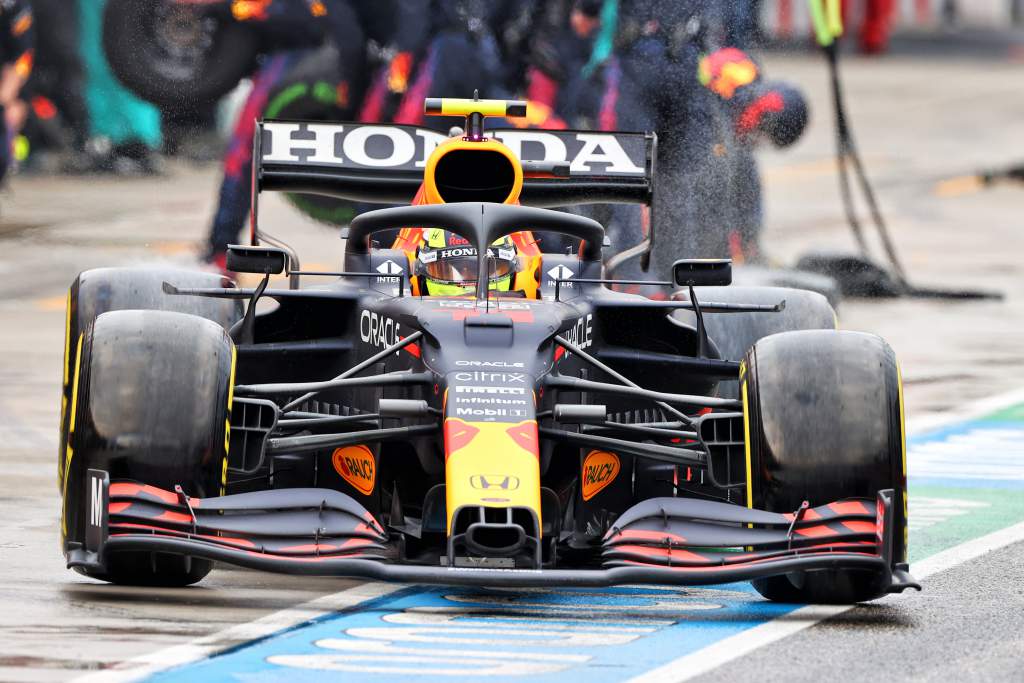Up Next

There’s been endless talk about how the new narrower floor and rear brake duct/diffuser regulation change has hurt the different car concepts. But as we know, teams normally find a workaround to optimise the performance of their own individual beliefs.
And I say beliefs because that’s actually all a concept is – believing that the direction you have chosen is the correct one and developing it to the maximum level.

The last change we had that generated as many column inches was in 2019, when the ‘furniture’, as it was called, was outlawed from the front wings (see the 2018 Red Bull above for a previous example).
This, together with reducing the ‘outwash’ that the front wing endplates could generate, was again a major talking point but with all these changes, over time teams find a solution that suits them. We’re now in the third season of these front wing rules, so teams have had plenty of time to refine their concepts.
Looking at the design of the current Mercedes, Red Bull and Ferrari front wings, they have all converged on a similar approach. But they still have subtle but significant differences.

To show this in more detail, I placed put a horizontal line (green) from the bottom of the front corner of the wing endplate. As you can see on the inboard end, the FIA-mandated centre section is at the same height for all three cars. The profile, width and location of this is defined in the regulations, so it is a good reference to use to look at the differences in the design of the rest of the wing.
I have then put a line (blue) along the leading edge of the Red Bull front wing mainplane and then transposed it onto the other two cars using the end of the central section as a location.
As you can see, there are some changes in this profile but they do all follow the same trend to varying degrees by rising up initially from that central section, then levelling off and sweeping back up again towards the endplate.
This outer section being raised up is to reduce the sensitivity when the car is in roll mid-corner. If it was low, it would either generate too much front downforce, making the rear of the car unstable, or suffer from a stall, generating understeer just when you don’t want it.
Red Bull has what you would call the most ground clearance under its front wing mainplane, so in general this concept would generate less ground effect but be more stable over varying ride heights.
I have then put a line (yellow) along the trailing edge of the Mercedes flap and then transposed it onto the other cars again using the end of the central section as a reference.
When the regulations for this style of wing came about in 2019, the Mercedes and Ferrari were the big talking point. They were at either end of the spectrum conceptually.

Mercedes initially tested with ‘in wash’ front wing endplates, with a design of car that was signed off early to allow it to maximise its development time for the second-test package, but by bringing it to the circuit it just shows the team wasn’t sure which direction to initially take. This effectively resulted in a quick change in direction from the first to the second test.
Mercedes also ran with what was at that time a heavily-loaded outboard flap arrangement. As we can see, it has now followed the route set down by Ferrari of an unloaded outboard flap concept.
If were to put a percentage to who has followed who most it would be Ferrari 10% towards Mercedes and Mercedes 90% towards Ferrari.
The one that still stands out is Red Bull. I am still of the belief that it uses the outboard end of the front wing to generate downforce when the front wheels are steered.

In general, the driver requires the car to have a neutral-to-slight understeer in fast corners. If you have that, then these cars understeer in slow- and medium-speed corners.
But if you want to have another item in your toolbox to help get an overall circuit balance, then using the steering angle to alter that balance is the only thing you have that varies with corner speed. By definition, the slower the corner the more steering angle.
Teams use the steering angle to lower the front ride height and to jack weight around the car. Both of these are to reduce understeer, but to me Red Bull is the only team also trying to do it using the opening on the front wing generated by steering lock.
When the steering is turned, the outside front wheel opens up the trailing edge of the flap section of the wing. It also allows the low-pressure area behind that tyre to help the performance of the outboard end of the front wing – and in doing so generates more of an outwash.
This will work the outboard end of the front wing harder, generating more steering-lock-initiated front downforce, and potentially reduce the understeer in slow corners, it will also be fairly progressive as the steering lock is increased. Also, the fact that the outboard mainplane is further away from the ground means it won’t suffer the same sensitivity problems when this area works harder.
To me, the telltale sign is this small gurney flap (marked in the comparison picture with a red oval) it is using on the trailing edge of that section of the wing. A gurney flap is a 90-degree trip that is mounted on the trailing edge of the wing, that is used to generate a little more downforce from a wing assembly, but in reality it actually works better at low speed than just a flap adjustment.
So anyone who thinks a front wing is just a front wing can see from all this that there are many variations – some subtle, some more extensive.
But in the end, you need to follow what you understand and believe in, and copying others will only get you so far.




